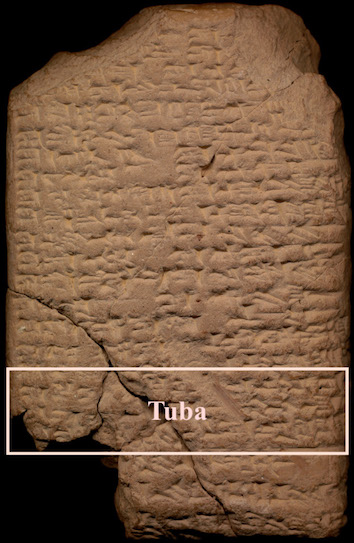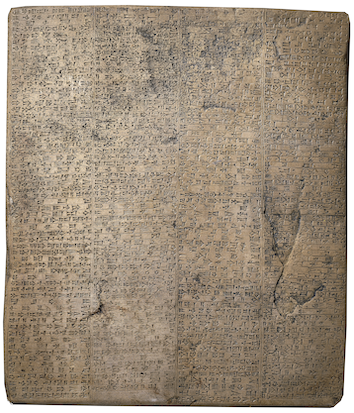Esabad (temple of Gula at Babylon)
Esabad was one of the three religious buildings in the Tuba district of West Babylon, at least according to Tablet IV of the scholarly compendium Tintir = Babylon. That temple was dedicated to the goddess Gula. This temple was rebuilt by the late Neo-Assyrian king Ashurbanipal (r. 668–ca. 631 BC) and by the Neo-Babylonian king Nebuchadnezzar II (r. 604–562 BC). As is clear from the Rahimesu Archive and related texts, Esabad survived into the Parthian Period (ca. 90 BC).

Names and Spellings
This temple at Babylon went by the Sumerian ceremonial name Esabad, which means "House of the Open Ear"; this name was also used for Gula temples and sanctuaries at Isin (modern Ishan al-Bahriyat) and Ashur (modern Qalat Sherqat). Some texts explaining the names of religious buildings, including the so-called "Götteradressbuch von Assur" (Divine Directory of Ashur), translate Sumerian Esasab as Akkadian bītu petât unzi ("House of the Open Ear") and bītu nāṣir qubūri ("House Which Protects Graves").
- Written Forms: e₂-sa-ba-ad; e₂-sa-bad; e₂-sa-bad₃.
Known Builders
- Neo-Assyrian (ca. 911–612 BC)
- Ashurbanipal (r. 668–ca. 631 BC)
- Neo-Babylonian (ca. 625–539 BC)
- Nebuchadnezzar II (r. 604–562 BC)
Building History
Although Esabad is mentioned in a fragmentarily preserved inscription of the seventh-century-BC Assyrian king Esarhaddon (r. 680–669 BC), the first certainly-attested builder of this Gula temple at Babylon is his son and successor on the Assyrian throne, Ashurbanipal, who claims to have built it "from its foundation(s) t]o its crenellations." That project was completed late in his reign, perhaps in 638 BC, or slightly later, possibly in 637 BC.

BM 129397, a large stone tablet that bears a long Akkadian inscription that is now commonly referred to as the "East India House Inscription." The description of Nebuchadnezzar's rebuilding of Gula's temples in Babylon is recorded in lines iv 38–43. Image adapted from the British Museum Collection website. Credit: Trustees of the British Museum.
Several Akkadian inscriptions of the Neo-Babylonian king Nebuchadnezzar II, including one written on a large stone tablet (the so-called "East India House Inscription") and a few written on rock faces in Lebanon, record that this ruler not only built Esabad's structure with bitumen (Akkadian kupru) and baked brick (Akkadian agurru), but also dedicated metal(-plated) and gem-studded objects to it. The so-called "Wadi Brisa C[ontemporary] Inscription" records the following:
Of note are the metal(-plated) dog statues stationed in the temple's gateways. The dog was Gula's attribute animal.
Although Esabad survived into the Parthian Period (ca. 90 BC), nothing is known about its building history after the reign of Nebuchadnezzar II.
Archaeological Remains
Esabad has not yet been positively identified in the archaeological record.
Further Reading
- George, A.R. 1992. Babylonian Togographical Texts (Orientalia Lovaniensia Analecta 40), Leuven, pp. 331–332.
- George, A.R. 1993. House Most High. The Temples of Ancient Mesopotamia (Mesopotamian Civilizations 5), Winona Lake, p. 137 no. 944.
- Pedersén, O. 2021. Babylon: The Great City, Münster, p. 200.
Jamie Novotny
Jamie Novotny, 'Esabad (temple of Gula at Babylon)', Babylonian Temples and Monumental Architecture online (BTMAo), The BTMAo Project, a sub-project of MOCCI, [http://oracc.org/btmao/Babylon/TemplesandZiggurat/Esabad/]